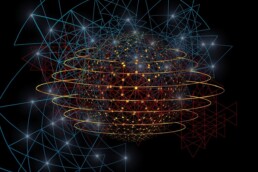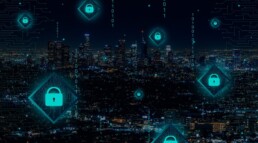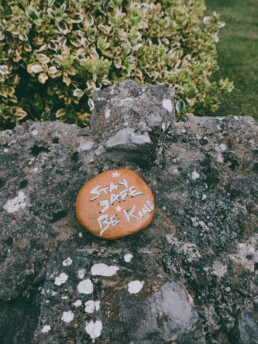What is Proof of Stake?
As blockchain technology continues to evolve, so do the methods we use to secure and maintain decentralized networks. One of the most promising developments in this space is Proof of Stake (PoS), an alternative to the energy-intensive Proof of Work (PoW) consensus mechanism, that promises to be a more sustainable option for the future of blockchain.
What is Proof of Stake (PoS)?
Proof of Stake (PoS) is a consensus algorithm used by blockchain networks to validate transactions and secure the network. Unlike Proof of Work, which relies on computational power and energy consumption, PoS operates on a different principle: participants in the network are selected to validate transactions and create new blocks based on the amount of cryptocurrency they hold and are willing to "stake" as collateral.
In PoS, the probability of being chosen as a validator (sometimes called a "forger" or "staker") is proportional to the amount of cryptocurrency a participant owns. This means that the more coins you stake, the higher your chances of being selected to add the next block to the blockchain. In return, validators receive rewards in the form of transaction fees or newly minted coins.
How Does Proof of Stake Work?
First of all, is about staking so participants in a PoS network lock up a certain amount of cryptocurrency in the blockchain as a "stake." This stake acts as collateral, ensuring that validators have a financial incentive to act honestly.
Then there is a validator selection, so validators are chosen to create new blocks based on a combination of factors, including the size of their stake, the amount of time they’ve been staking, and sometimes randomization. This selection process is designed to be fair and prevent any single participant from dominating the network.
After, the selected validator creates a new block and adds it to the blockchain. This block includes a record of recent transactions. Other validators then confirm the accuracy of the block, so its like a block validation.
For this work validators earn rewards, typically in the form of transaction fees or additional cryptocurrency. If a validator acts dishonestly (e.g., trying to approve fraudulent transactions), they risk losing their staked coins as a penalty.
The security of a PoS network is maintained by the financial stake of its participants. If a validator tries to undermine the network, they stand to lose their staked coins, which provides a strong deterrent against malicious behavior.
Advantages of Proof of Stake
- Energy Efficiency: One of the most significant advantages of PoS over PoW is its energy efficiency. Since PoS doesn’t require massive computational power to validate transactions, it consumes far less electricity, making it a more environmentally friendly option.
- Lower Barriers to Entry: PoS allows more people to participate in the network without needing expensive mining equipment. All you need is the cryptocurrency to stake, which democratizes access to the network and reduces centralization.
- Scalability: PoS networks can process transactions faster and more efficiently than PoW networks, making them more scalable and capable of handling a higher volume of transactions.
- Security: While PoS is different from PoW, it still offers strong security features. The financial incentive to act honestly, combined with penalties for malicious behavior, ensures that the network remains secure and trustworthy.
- Decentralization: By lowering the barriers to participation, PoS can help maintain or even increase decentralization. With more validators in the network, control is distributed more evenly, reducing the risk of centralization.
In this sense, several major blockchain networks have adopted or are transitioning to PoS, including Ethereum 2.0, Cardano and Polkadot.
Challenges of Proof of Stake
PoS offers many advantages, but it also faces challenges like wealth concentration, for example. Critics argue that PoS could lead to wealth concentration, where those with more cryptocurrency have more power in the network. However, many PoS networks are designed with mechanisms to mitigate this risk. Also it faces some security risks, while PoS is generally secure, it’s not immune to attacks. For example, a problem that could arise is if validators can validate multiple chains without penalty. However, most PoS networks have solutions to address this issue.
Proof of Stake represents a significant evolution in blockchain technology, offering a more sustainable, scalable, and accessible alternative to Proof of Work. As major networks like Ethereum embrace PoS, we’re likely to see increased adoption and innovation in this space. For those concerned about the environmental impact of blockchain, PoS provides a promising path forward, ensuring that the future of decentralized technology is not only secure and efficient but also greener.
Understanding the Backbone of Blockchain Security: What is Proof of Work?
Proof of Work (PoW) is one of the most fundamental concepts in the world of blockchain and cryptocurrencies. It’s a consensus mechanism that ensures the security and integrity of decentralized networks.
What is Proof of Work?
Proof of Work is a consensus algorithm used by many blockchain networks to validate transactions and secure the network. In a decentralized system, there’s no central authority to oversee and validate transactions, so a method is needed to ensure that all participants agree on the state of the blockchain. This is where Proof of Work comes in.
PoW requires participants, known as miners, to perform complex computational tasks to add new transactions to the blockchain. These tasks are resource-intensive and require significant computational power, hence the term "work." The first miner to successfully complete the task is rewarded with cryptocurrency, and their solution is used to validate the block of transactions. This block is then added to the blockchain, and the process repeats for the next block.
How does it work?
Here’s a simplified breakdown of how Proof of Work operates:
- Transaction Bundling: Transactions made by users on the network are bundled together into a block by miners. This block is like a page in the blockchain’s digital ledger.
- Solving the Puzzle: Miners compete to solve a complex mathematical puzzle associated with the block. This puzzle is difficult to solve but easy for others to verify. The process involves guessing a number called a "nonce" that, when combined with the block’s data, produces a hash (a string of characters) that meets certain criteria (usually a number of leading zeros).
- Validation and Reward: The first miner to find the correct nonce that solves the puzzle broadcasts their solution to the network. Other miners quickly verify the solution. If the solution is correct, the block is added to the blockchain, and the successful miner is rewarded with cryptocurrency (such as Bitcoin) for their effort.
- Network Security: Because the process of solving the puzzle requires substantial computational effort, it acts as a deterrent to malicious actors. To alter the blockchain, a hacker would need to redo the Proof of Work for every block up to the current block, which is practically impossible for a sufficiently large and distributed network.
Why is Proof of Work Important?
Proof of Work (PoW) plays a critical role in maintaining the security, transparency, and trustworthiness of blockchain networks. Concerning security, PoW makes it extremely difficult and expensive to manipulate the blockchain. The immense computational power required to solve the puzzles ensures that no single entity can easily alter the history of transactions.
Also, PoW supports decentralization by allowing anyone with the necessary hardware to participate in mining. This prevents central control and ensures that the network remains distributed.
Thanks to in a decentralized network, it ensures consensus which is essential so that all participants agree on the state of the blockchain. PoW provides a clear and objective method for achieving consensus without the need for a central authority.
Another key aspect of PoW is the prevention of double-spending as it ensures that once a transaction is recorded in the blockchain, it cannot be reversed. This prevents the double-spending problem, where a digital currency could be spent more than once.
Challenges of Proof of Work
Despite its strengths, Proof of Work is not without its challenges and needs to address some importan issues:
- Energy Consumption:
- PoW is notoriously energy-intensive. The computational power required to solve the puzzles consumes a large amount of electricity, leading to environmental concerns.
- Centralization of Mining:
- Over time, mining has become more centralized, with large mining pools and farms dominating the process. This concentration of power can undermine the decentralized nature of the network.
- Scalability:
- PoW can be slow and inefficient, limiting the number of transactions that can be processed in a given time. This has led to discussions about the scalability of PoW-based networks.
Proof of Work is the backbone of many blockchain networks, providing the security and consensus needed for decentralized systems to function effectively. While it has its challenges, PoW has proven to be a robust and reliable method for maintaining the integrity of the blockchain. As the blockchain space continues to evolve, ongoing innovations and alternative consensus mechanisms, such as Proof of Stake (PoS), are being explored to address the limitations of PoW while preserving the benefits it brings to the world of decentralized finance and beyond.
What is a network?
In the context of cryptocurrencies and NFTs, a network refers to the interconnected system of nodes that collectively operate and maintain the blockchain. This network ensures the integrity, security, and functionality of the cryptocurrency. Within a network you can find several components and functions that is interesting to know about, such as:
- Nodes: These are individual computers that participate in the network. Nodes can be full nodes, which store a complete copy of the blockchain, or lightweight nodes, which store only parts of the blockchain necessary for transactions.
- Blockchain: This is the distributed ledger that records all transactions made with the cryptocurrency. The blockchain is maintained and updated by the network of nodes.
- Miners/Validators: In networks that use Proof of Work (PoW), miners solve complex mathematical problems to add new blocks to the blockchain. In Proof of Stake (PoS) systems, validators are chosen based on the number of tokens they hold and are willing to "stake" as collateral.
- Consensus Mechanism: This is the protocol that nodes follow to agree on the state of the blockchain. Common consensus mechanisms include Proof of Work (PoW) and Proof of Stake (PoS). These mechanisms ensure that all nodes agree on the validity of transactions and the order in which they are added to the blockchain.
- Cryptographic Algorithms: These algorithms secure transactions and control the creation of new units of the cryptocurrency. Public and private key pairs are used to ensure that only the owner of a cryptocurrency can spend it.
- P2P Network (Peer-to-Peer Network): This is the decentralized architecture where nodes communicate and share information directly with each other, rather than through a centralized server. This structure helps to ensure the robustness and security of the network.
- Smart Contracts: In some networks, like Ethereum, smart contracts are self-executing contracts with the terms directly written into code. These contracts automatically execute and enforce the terms of an agreement based on predefined rules.
- Transactions: These are the records of cryptocurrency exchanges between participants in the network. Transactions are verified by nodes and added to the blockchain.
The network's decentralized nature ensures that no single entity has control over the entire system, making it resistant to censorship and fraud. Each component of the network works together to maintain the security, transparency, and functionality of the cryptocurrency and NFTs.
The Environmental Impact of NFTs: Exploring Sustainable Practices in the NFT Space
As NFTs (Non-Fungible Tokens) continue to reshape the art and digital collectibles world, a growing conversation around their environmental impact has emerged. Blockchain technology, which underpins NFTs, often relies on energy-intensive processes, leading to concerns about its ecological footprint. However, the NFT space is evolving, with artists, platforms, and developers increasingly adopting sustainable practices to mitigate these impacts. Let's explore the environmental concerns surrounding NFTs and highlight the efforts being made to create a more eco-friendly future.
Understanding the Environmental Impact
At the heart of the environmental concerns related to NFTs is the energy consumption associated with blockchain networks, particularly those using Proof of Work (PoW) consensus mechanisms, like Ethereum. These networks require vast amounts of computational power to validate transactions and mint new tokens, contributing to significant carbon emissions.
For many creators and collectors, this raises ethical questions. Is it possible to enjoy the benefits of NFTs without contributing to environmental degradation? The good news is that the NFT community is actively seeking solutions to reduce its ecological impact.
Sustainable Practices in the NFT Space
- Transition to Proof of Stake (PoS): One of the most promising developments in the blockchain space is the transition from Proof of Work to Proof of Stake (PoS) consensus mechanisms. PoS networks, such as the upgraded Ethereum 2.0 and other blockchains like Tezos and Cardano, require significantly less energy to operate, reducing their carbon footprint dramatically.
- Carbon Offsetting Initiatives: Some platforms and artists are taking direct action by offsetting the carbon emissions associated with NFT transactions. By investing in carbon credits or supporting reforestation projects, they aim to neutralize their environmental impact.
- Eco-Friendly Blockchain Platforms: Several blockchain platforms are designed with sustainability in mind. Tezos, for instance, is a PoS blockchain that has become popular among eco-conscious artists. Its energy-efficient design has attracted creators who want to minimize their environmental impact while still participating in the NFT space.
- Layer 2 Solutions: Layer 2 scaling solutions, such as Polygon (formerly Matic Network) and the one we use in DAFNE+ Platform, help reduce the environmental impact by processing transactions off the main Ethereum chain, which is more energy-intensive. By using these solutions, NFT platforms can lower their carbon footprint while maintaining security and decentralization.
- Artist-Led Initiatives: Many artists are leading the charge toward sustainability in the NFT space. Creators like Joanie Lemercier, who paused his NFT releases to address environmental concerns, have raised awareness and advocated for greener practices within the community. Other artists are exploring alternative blockchains and creative ways to offset their carbon emissions.
While the environmental impact of NFTs is a valid concern, the NFT community is not standing still. Through a combination of technology advancements, eco-friendly platforms, and conscious creators, the space is moving toward a more sustainable future. By supporting these initiatives and choosing platforms and artists who prioritize the planet, collectors and creators alike can enjoy the benefits of NFTs without compromising their commitment to sustainability.
As the conversation around environmental impact continues, it's crucial that we all play a part in advocating for and adopting greener practices in the NFT space. Together, we can ensure that the future of digital art and collectibles is not only innovative but also environmentally responsible.
What's the importance of a smart contract in NFTs?
A few weeks ago we learnt what a smart contract was and the most popular uses of them. In this new post we will focus on how smart contract are used in the contexts of artistic creation and NFTs.
And this is because smart contracts play a crucial role in the creation, management, and transfer of Non-Fungible Tokens (NFTs).
1. Creation and Minting
- Definition of NFTs: Smart contracts define the properties of an NFT, such as its name, symbol, and unique attributes (metadata).
- Minting Process: When a new NFT is created, a smart contract mints (generates) the token on the blockchain. This process involves assigning a unique identifier to the NFT and recording it on the blockchain.
2. Ownership and Provenance
- Ownership Records: Smart contracts maintain a transparent and immutable record of ownership. Each time an NFT is transferred, the smart contract updates the ownership record on the blockchain.
- Provenance: The history of an NFT, including its creation and all subsequent transfers, is stored on the blockchain. This ensures the authenticity and provenance of the NFT, which is crucial for valuing digital art and collectibles.
3. Transfers and Sales
- Automated Transfers: Smart contracts handle the transfer of NFTs between parties. When a sale is completed, the smart contract automatically transfers ownership to the buyer and updates the blockchain.
- Marketplaces: NFT marketplaces use smart contracts to facilitate buying, selling, and auctioning NFTs. The contracts ensure that transactions are executed according to predefined rules without the need for intermediaries.
4. Royalties and Revenue Sharing
- Built-in Royalties: Creators can embed royalty terms into the smart contract of an NFT. Each time the NFT is resold, a percentage of the sale price is automatically transferred to the creator.
- Revenue Sharing: Smart contracts can also be programmed to distribute revenue among multiple stakeholders, ensuring that all parties involved in the creation of an NFT are fairly compensated.
5. Interoperability and Standards
- ERC-721 and ERC-1155 Standards: Most NFTs are created using standard smart contracts like ERC-721 and ERC-1155 on the Ethereum blockchain. These standards ensure interoperability, allowing NFTs to be easily transferred and traded across different platforms and marketplaces.
- ERC-721: Defines a single, unique token (non-fungible).
- ERC-1155: Allows for a combination of fungible and non-fungible tokens in a single contract, providing more flexibility.
6. Functionality and Interaction
- Programmable Utility: Smart contracts can endow NFTs with additional functionality, such as access to exclusive content, participation in games, or membership benefits.
- Interaction with dApps: NFTs can interact with decentralized applications (dApps) through smart contracts, enabling complex use cases like in-game assets, virtual real estate, and more.
7. Security and Trust
- Immutable Contracts: Once deployed, smart contracts cannot be altered. This immutability ensures that the terms of an NFT, including ownership and royalties, are secure and tamper-proof.
- Trustless Transactions: Smart contracts enable trustless transactions, meaning parties can engage in transactions without needing to trust each other or a central authority. The contract enforces the terms automatically.
In conclusion, smart contracts are fundamental to the functioning of NFTs, providing the underlying framework for creating, owning, transferring, and interacting with these unique digital assets. They ensure transparency, security, and automation in the NFT ecosystem.
What is a Smart Contract?
One of the particularities of the NFT space is the use of smart contracts, even though that their use is not exclusive of this industry. Understanding the concept and their use can be very helpful for artists that want to create content and art inside the space.
So, in the context of cryptocurrencies and blockchain technology, a smart contract is a self-executing contract with the terms of the agreement directly written into code. These contracts automatically execute and enforce the terms of an agreement based on predefined rules and conditions, without the need for intermediaries.
Some of the key aspects of smart contracts are:
- Code-Based Agreements: The terms and conditions of a smart contract are written in programming code, which is then deployed onto a blockchain. This code contains the logic that dictates how the contract should function.
- Automation: Once the predefined conditions specified in the smart contract's code are met, the contract automatically executes the agreed-upon actions. This automation reduces the need for human intervention and minimizes the risk of errors.
- Trust and Transparency: Since smart contracts are deployed on a blockchain, they inherit the blockchain’s properties of transparency and immutability. All participants can see the contract’s code and its execution, ensuring trust and accountability.
- Decentralization: Smart contracts operate on decentralized blockchain networks, meaning they are not controlled by any single entity. This decentralization enhances security and reduces the risk of manipulation or censorship.
- Security: While smart contracts offer many advantages, they are also susceptible to bugs and vulnerabilities in their code. Ensuring the security of smart contracts through thorough testing and auditing is crucial to prevent exploits and attacks.
- Interoperability: Some blockchains are designed to work with other blockchains, allowing smart contracts to interact across different networks, thereby enhancing their functionality and reach.
In these sense, there are several use cases that can be found using smart contracts in a daily basis. The first clear example is a financial transaction. A smart contract can automate payments, loans, and other financial agreements. Another common use is token issuance or token distributions that often use smart contracts to precisely manage the issuance and distribution of new tokens. In this same line we can find that many blockchain-based applications, particularly on platforms like Ethereum, the use smart contracts is frecuent to handle their core functionalities. And last but not least, its is very useful in supply chain management. This is because smart contracts can track goods through a supply chain, automatically triggering actions like payments or transfers of ownership when certain conditions are met.
So, to conclude, smart contracts are a powerful tool within the blockchain ecosystem, enabling the creation of decentralized and automated agreements that are secure, transparent, and efficient.
What is a wallet?
The metaverse and the blockchain space has brought a whole new dimension to the Internet. This new begining of the online world has created new opportunities for many sectors like the creative economy. New opportunities but also new threats, so one of the first things an artist starting in this space should do is get familiar with the new concepts and terminology and understand them. One of those first concepts to be learnt is a wallet because it will be of vital importance to maintain the security over the NFTs they create.
What is a wallet?
A "wallet" is a digital tool or software that allows individuals to store, manage and interact with their cryptocurrencies or NFTs. It serves a similar purpose to a physical wallet for traditional currency but is used to store digital assets. So this way, the main purpose of a wallet is storage, to keep and control your digital assets on the blockchain through cryptographic keys (private and public keys) needed to access and control it. Another important function is security because they are used to protect your cryptocurrency holdings by requiring authentication to access the keys. The third function that we can apply to wallets is transaction management because they allow you to send and receive cryptocurrencies. You can use your wallet's interface to create and sign transactions. And the last one could be balance inquiry because you can check your cryptocurrency balance within your wallet to see how much of a particular cryptocurrency you own.
Types of Wallets
Even though most of the wallets are used in a similar way and have the same functionalities in the market you can find several types.
- Software Wallets (Hot):
- Online Wallets: These are cloud-based wallets that you can access through a web browser. They are convenient but may be less secure.
- Mobile Wallets: These are apps that you can install on your smartphone. They are user-friendly and portable.
- Desktop Wallets: These are software applications that you can download and install on your computer. They provide control but are less portable.
- Browser Extension Wallets: These are browser add-ons that offer easy access to blockchain services.
- Hardware Wallets (Cold):
- These are physical devices specifically designed for securely storing cryptocurrency keys offline. They are often considered one of the most secure options.
- Multisignature Wallets:
- These require multiple private keys to authorize a transaction, providing added security and control.
Choosing the right wallet depends on your needs and priorities. If you're actively trading or using cryptocurrencies, you might prefer a software wallet for convenience. However, if you're holding a significant amount of cryptocurrency for the long term, a hardware wallet is often recommended for its security benefits. It's important to thoroughly research and select a reputable wallet, as the security of your digital assets depends on it.
Can music be turned into an NFT?
Music is an art form and cultural activity that involves organizing sounds in a structured and meaningful way. It is created by combining various elements such as melody, harmony, rhythm, and timbre to evoke emotions, convey ideas, and communicate messages. Music is present in virtually all cultures and societies around the world, playing a significant role in human expression and communication.
As an artistic expression, music can indeed be turned into an NFT (Non-Fungible Token). NFTs have expanded beyond visual art to encompass various forms of digital content, including music. Musicians and artists can tokenize their music using NFTs, allowing them to sell and distribute their work in a unique and digitally verifiable way.
Here's how music can be turned into an NFT:
- Creation of the NFT: The process starts by creating a digital representation of the music, typically in the form of a digital audio file. This audio file is then associated with a unique NFT on a blockchain platform, which validates its authenticity, ownership, and provenance.
- Metadata and Information: Along with the audio file, metadata and information about the piece of music can be included in the NFT, such as the artist's name, album title, release date, and any other relevant descriptions.
- Listing on NFT Marketplaces: After minting the NFT, the artist can list it on NFT marketplaces that support music, that allow users to discover, bid on, or purchase the music NFTs.
- Royalties and Secondary Sales: Similar to other NFTs, music NFTs can incorporate royalty mechanisms. This means that whenever the NFT is resold in the secondary market, the original artist or creator can receive a percentage of the sale, ensuring ongoing compensation for their work.
- Licensing and Usage Rights: Artists can define the terms of usage rights for their music NFTs. They can choose to offer different tiers of ownership, each with varying levels of usage rights. For example, one tier might allow private listening, while another might grant public performance rights.
- Collector Benefits: Buyers of music NFTs can enjoy unique benefits, such as exclusive access to the music, the ability to resell the NFT, and a verifiable digital connection to the artist's work.
Music NFTs have gained popularity as a way for musicians to directly engage with their fans, offer unique digital collectibles, and monetize their creative output. They also enable fans to become more connected to the music and the artist.
What is an NFT marketplace?
An NFT marketplace is an online platform where Non-Fungible Tokens (NFTs) are bought, sold, and traded. NFTs represent unique digital or physical assets, often related to art, music, videos, virtual items, collectibles, and more. Unlike fungible tokens like cryptocurrencies, each NFT has distinct properties and cannot be exchanged on a one-to-one basis with another NFT.
The main features of NFT marketplaces are:
- Listing and Discovery: Creators and sellers can list their NFTs on the marketplace, providing details about the asset, its provenance, and any associated metadata. Buyers can explore the marketplace to discover and browse a wide range of NFTs.
- Bidding and Auctions: Some NFT marketplaces facilitate auctions, where potential buyers can place bids on NFTs. Auctions can increase excitement and competition for valuable or highly sought-after digital assets.
- Fixed Price Sales: NFTs can also be listed with a fixed price, allowing buyers to purchase the NFT instantly at the listed price.
- Royalties and Secondary Sales: Many NFT marketplaces include a royalty mechanism, which ensures that creators receive a percentage of the sale whenever the NFT is resold on the secondary market.
- Wallet Integration: Users typically connect their cryptocurrency wallets to NFT marketplaces to facilitate transactions. This integration enables secure buying, selling, and transferring of NFTs.
- Curation and Categories: NFT marketplaces often categorize NFTs by type, genre, or theme to help users discover assets of interest. Curated collections and featured artists may also be highlighted to promote specific NFTs.
- Verification and Authenticity: NFT marketplaces use blockchain technology to verify the authenticity of NFTs and track their ownership history. This ensures that buyers are purchasing genuine and unique digital assets.
Marketplaces have gained significant attention as they provide a platform for creators and collectors to engage in a new form of digital ownership and commerce. Nevertheless as the rest of Web3 technolgy is evolving so are marketplaces. The reality is that NFT marketplaces have revolutionized the way digital assets are bought, sold, and valued, creating opportunities for creators to monetize their work in unique and innovative ways. Such as DAFNE+, that looks to increase the legal transparency for creators and artists, offering new forms of royalty distribution and allowing to keep track of the secondary market.
What is the creator economy?
The creator economy refers to a digital ecosystem that empowers individuals to monetize their creative skills, talents and content, directly, without the need for traditional intermediaries. It is driven by the rise of digital platforms and technologies that enable content creators to build and engage with their audience, monetize their work, and establish their personal brand. In this new kind of economy, individuals have the opportunity to become creators, influencers, or entrepreneurs by leveraging their expertise in various fields such as video production, photography, writing, podcasting, music, art, and more. They can produce content, share it online, and develop a loyal community around their work.
Key elements of the creator economy
- Digital Content Creation: Creators produce content across various platforms, including YouTube, Instagram, TikTok, podcasts, newsletters, and personal websites. Their content may range through various topics, from educational content and entertainment to lifestyle, fashion, gaming, and others.
- Direct-to-Consumer Relationships: Creators build direct relationships with their audience and fan base through social media and other communication channels. This direct interaction fosters a sense of community and loyalty, enabling creators to better understand their audience's preferences and needs. And this is precisely one of the key points of this new relationship between creator and audience.
- Monetization Strategies: Creators use a range of monetization strategies to generate revenue from their content and online presence. These strategies include brand sponsorships, merchandise sales, paid subscriptions, crowdfunding, affiliate marketing, and creating premium content for dedicated followers.
- Platforms and Creator Tools: Various platforms and creator-centric tools have emerged to support content creators in managing their businesses. These tools include analytics platforms, membership and subscription management services, content creation and editing tools, and crowdfunding platforms.
- Entrepreneurial Mindset: Creators in the creator economy often adopt an entrepreneurial mindset, treating their online presence as a business. They take on various roles, including content production, marketing, community management, and financial management.
- Emphasis on Authenticity and Transparency: Authenticity and transparency are highly valued in the creator economy. Creators build trust with their audience by being genuine, open about their processes, and staying true to their values and interests.
The creator economy has also given rise to a new breed of platforms and services that cater to the needs of content creators, providing them with tools and resources to grow their businesses. As the creator economy continues to evolve, it is reshaping the traditional media landscape and challenging traditional notions of work and employment.
Embracing NFTs
In this sense, the creator economy has started to embrace the use of Non-Fungible Tokens (NFTs) as a way to further monetize and engage with their audience. One of the main reasons for this is that the creative sector is enabled by advancements in technology and the widespread accessibility of the internet.
NFTs are unique digital collectibles, so this means that creators can mint and sell their artwork, music, videos, or virtual goods in this form. These NFTs can be bought, sold, and traded on blockchain marketplaces, providing creators with a new revenue stream and giving fans a chance to own exclusive digital items.
As traditional collectibles, NFTs allow creators to offer limited edition content or experiences to their most dedicated fans. By creating scarcity through NFTs, creators can sell limited copies of their work, granting buyers access to exclusive content, behind-the-scenes experiences, or virtual interactions.
Another benefit that NFTs bring to the table is the possibility of earning royalties and secondary sales of their digital assets. Whenever an NFT is resold on a marketplace, the creator can receive a percentage of the sale value, ensuring ongoing revenue as the value of their creations appreciates.
After this advantages there is another one related to the building of a community. NFTs enable the possibility to grant access to exclusive communities, events, or memberships. Creators can create NFT-based memberships that offer perks like early access to content, private chats, or special rewards for token holders, strengthening the connection between the creator and their most dedicated supporters.
If this wasn't enough NFTs enable collaborative creations and shared ownership. Multiple creators can come together to collaborate on an NFT project, with each participant contributing their unique talents. This shared ownership model can strengthen partnerships and allow for shared revenue distribution.
Besides this multiple advantajes, the use of NFTs in the creator economy has also generated some concerns discussions around environmental impact, copyright infringement, and the long-term value of digital assets are only some of them.
Nevertheless, as the space evolves, creators and platforms are exploring ways to address these issues and ensure responsible and sustainable integration of NFTs in the creator economy.









